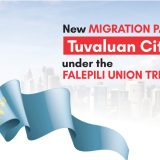Introduction
Australia stands as a beacon of academic excellence, attracting students globally. However, navigating visa processes can be daunting. Understanding the intricacies of education visas is crucial for success.
Aspiring students must determine the visa type based on their course of study. The most common is the Student Visa (Subclass 500), requiring proof of enrollment, English proficiency, and financial capacity.
Other options include the Training Visa (Subclass 407) for occupational training and the Temporary Graduate Visa (Subclass 485) for recent graduates seeking work experience.
Navigating the process can be complex, but with assistance from migration consultants like Vision Consultants Melbourne, students can streamline applications and maximize success.
In conclusion, obtaining an education visa is crucial for realizing academic ambitions in Australia. Understanding requirements and seeking guidance can unlock opportunities for a transformative educational journey.
Understanding Education Visas
Australia’s education system is highly regarded worldwide, attracting students from diverse backgrounds. To study in Australia, international students typically require an education visa, which grants them permission to pursue their chosen courses at Australian institutions.
The Student Visa (Subclass 500) is the most common visa for international students. It allows individuals to undertake full-time study in registered courses at approved Australian educational institutions. To be eligible for this visa, applicants must provide proof of enrollment, demonstrate English proficiency, and show evidence of financial capacity to cover tuition fees and living expenses.
In addition to the Student Visa, there are other visa options available for individuals seeking to study, train, or work in Australia:
- Training Visa (Subclass 407): This visa is designed for individuals who want to undertake workplace-based occupational training to enhance their skills and expertise. It allows applicants to stay in Australia for up to two years and requires sponsorship by an approved Australian employer.
- Temporary Graduate Visa (Subclass 485): Graduates of Australian educational institutions may be eligible for this visa, which allows them to live, study, and work in Australia temporarily after completing their studies. There are two streams under this visa: the Graduate Work stream and the Post-Study Work stream, each with its own set of eligibility criteria.
Navigating the Visa Application Process
Obtaining an education visa for Australia involves several steps, and navigating the process can be overwhelming for many students. However, with proper guidance and support, the process can be streamlined, leading to a successful outcome.
- Research and Course Selection: Before applying for a visa, students should thoroughly research their chosen courses and institutions to ensure they meet their academic and career goals. Consulting with educational counselors or migration agents can provide valuable insights and assistance in course selection.
- Gathering Documentation: Once a course and institution have been chosen, applicants must gather the necessary documentation to support their visa application. This may include proof of enrollment, evidence of English proficiency (such as IELTS or TOEFL scores), financial statements demonstrating the ability to cover tuition fees and living expenses, and health insurance coverage.
- Submitting the Application: The visa application process typically involves completing an online application form and submitting supporting documents electronically. It’s essential to double-check all information and ensure that all required documents are included to avoid delays or rejection.
- Attend Biometrics Appointment (if required): Some visa applicants may be required to attend a biometrics appointment to provide fingerprints and photographs as part of the visa application process. This step helps verify the applicant’s identity and enhances the security of the visa system.
- Awaiting Decision: Once the application has been submitted, applicants must wait for a decision from the Department of Home Affairs. Processing times can vary depending on factors such as the applicant’s nationality, the complexity of the application, and the time of year.
Conclusion
Obtaining an education visa to study in Australia is a significant milestone for international students, opening doors to new opportunities for academic and personal growth. By understanding the visa options available, navigating the application process, and seeking assistance from reputable migration consultants, students can embark on a successful educational journey in Australia.
Vision Consultants Melbourne stands ready to assist students at every stage of the visa application process, providing expert guidance and support to help them achieve their academic goals. With the right resources and support, international students can unlock endless opportunities for learning and development in Australia.
ABOUT US
- Who are Vision Consultants
- Why Choose Us
- Our Staff
- Gallery / Event
- At Vision Consultants, we adhere to the Code of Conduct for Registered
Migration Agents governed by the Office
of Migration Authority.

SERVICES
- Student Visa Extension
- AAT Lawyer Melbourne
- Visa Cancellation and Refusal
- Change Visa Status
- Visitor Visa to Student Visa
- Partner Visa Australia
- Training Visa
- Protection Visa
- Change of provider
- Student Guardian Visa
- Employer Sponsorship Visas
- TR Visa-Subclass 485
- Release Letter Advice
- Professional Year
- General Skilled Migration
- Graduate Visa
- Migration Agents Melbourne
AVANTAGEHeadquarters
OUR LOCATIONSWhere to find us?

GET IN TOUCHAvantage Social links
©Copyright 2017-2022 | Vision Consultants.





